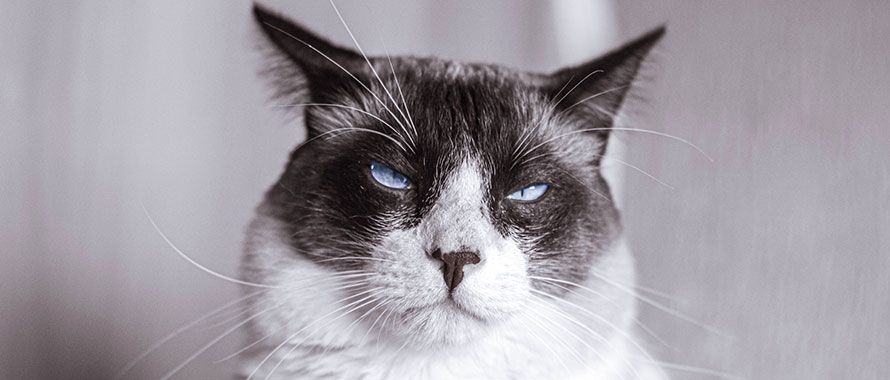More than five years after the death of Grumpy Cat, the internet-famous cat known for its disgruntled-looking expression, the company that owns its image and likeness continues to confront alleged trademark violations from other entities using the pet’s face for profit. According to a recent report from Courthouse News Service, Grumpy Cat Limited has filed more than 50 trademark lawsuits since 2019 in federal court for the Northern District of Illinois alone — a “constant game of whack-a-mole” as new retailers appear regularly selling merch featuring the feline, the outlet reported.
Featured Solutions
“It is interesting, to say the least,” said Joey Franiak, Broker, Professional Liability, Burns & Wilcox, San Diego, California. “A meme that has been trademarked is not something we deal regularly, as opposed to a patent or trade secrets, but this still falls under intellectual property.”
It is just one example of the importance of Intellectual Property (IP) Insurance, which can cover the costs of pursuing legal action over trademark infringements as well as defend companies accused of infringing on another’s trademark.

A major part of IP Insurance is the enforcement coverage, it helps the insured to protect or enforce their ownership of the intellectual property.
“A major part of IP Insurance is the enforcement coverage,” said Arran Auld, Broker, Professional Liability, Burns & Wilcox, based in Vancouver, Washington. “It helps the insured to protect or enforce their ownership of the intellectual property.”
Insurance needed for anything ‘worth protecting’
Grumpy Cat is not the only social media sensation to face trademark issues. Earlier this month, the mother of the child pictured in the popular “Success Kid” meme won her copyright infringement lawsuit against a former Republican congressman’s campaign for using the image, Bloomberg Law reported. Last summer, the company in Delaware known for starting the “hot girl walk” trend on TikTok sued a business in Florida for using a similar name, claiming trademark infringement, Business Insider reported. In 2022, former Real Housewives star Bethenny Frankel sued TikTok itself for allegedly using her “image and likeness” in ads to promote counterfeit goods, NBC News reported.

It is crucial to have IP Insurance if a business has something worth protecting such as a trademark or copyright.
When it comes to trademark infringement claims, “I think there is a lot more exposure with social media and the internet,” Auld said. “If they jump on a trend and someone owns the copyright to it, that could end up hurting them.”
The owners of this intellectual property, meanwhile, may not realize that they should protect their property with IP Insurance, which is a type of Professional Liability Insurance. This type of coverage is essential for any entity with an asset it wants to protect, from pharmaceutical companies and food manufacturers to social media influencers and owners of famous memes.
“It is crucial to have IP Insurance if a business has something worth protecting such as a trademark or copyright,” Franiak emphasized. “In the grand scheme of things, there are numerous creations that have a patent, but they do not necessarily have the protection that is needed. These creations are vital to the long-term success of company but detrimental if they were to be exploited. This coverage provides the company with a defense so if the worst-case scenario were to happen, they would be protected and provided compensation for what is deserved.”

The cat has passed away, but the meme has lived on, and it is still intellectual property, at the end of the day. The meme is valuable, and it needs to be protected.
For example, in the case of Grumpy Cat, Franiak said, “the cat has passed away, but the meme has lived on, and it is still intellectual property, at the end of the day. The meme is valuable, and it needs to be protected. There are so many individuals that would try to take advantage of something that is already profitable or has a proven track record.”
Amid today’s expanding social media landscape, that risk cannot be ignored. “It is something where if they are not thinking about it, they need to be thinking about it,” Franiak said.
The cost of pursuing IP claims
According to the American Marketing Association, over 3,000 trademark infringement lawsuits are filed every year in U.S. district courts; when these cases go to trial, total litigation often costs between $375,000 to $2 million. For plaintiffs, trademark infringement lawsuits can cost between $120,000 to $750,000 on average, according to Security Boulevard.
A company’s IP Insurance can include coverage for both abatement, which can provide legal defense in the event the company is sued for infringing another entity’s copyright, as well as enforcement, which protects the company in the event their trademarked property is used without permission. “Not everybody has to buy both sides,” Auld said, both aspects are important. “The enforcement coverage is something companies should pay a little more attention to. It will protect their interests [if their property is used].”
While most companies “are usually afraid of getting sued,” they may not consider how costly it could be if their intellectual property was used and they had to pursue legal action against someone else. In addition to the legal costs, the infringement itself could “dilute their value” to varying degrees, Auld said.
“These types of infringement can get pretty costly if they go after them,” Franiak said. Although a settlement may eventually be awarded, trial costs can escalate quickly. “That is where most of the money is going to be spent,” he said, pointing to the possible legal fees involved before the $710,001 Grumpy Cat verdict was awarded. “In that case, there could probably be another couple million dollars just in legal fees not even being accounted for.”
This is the case “anytime you get into litigation,” he said. “That generally ties up a bunch of money in the courts as you are fighting for what is potentially yours.”
Taking steps to avoid costly claims
In many trademark infringement cases, the companies responsible for the infringement did not realize the material was trademarked or did not attempt to gain permission to use it, Franiak said. With that in mind, companies should take steps to protect themselves, including obtaining the necessary patents or trademarks on their intellectual property and seeking advice from an attorney when needed.

If your company has an active social media presence, it can be easy to mistakenly post something that is not licensed properly.
“Always get advice from a lawyer,” he said. “You have to be really careful in this age of social media, where content is so easily found, to hit the pause button and think, ‘What could potentially come from this? Do we own this, or are we using something that is trademarked?’ You want to make sure you are not doing something that is going to come back and be detrimental to your own company.”
Auld agreed, encouraging business owners to “think about the exposure” and ensure they are managing their risks as well as carrying IP Insurance. “Whether they have their own copyrights to enforce or not, they should think about this coverage just in case,” he said. “If your company has an active social media presence, it can be easy to mistakenly post something that is not licensed properly.”






